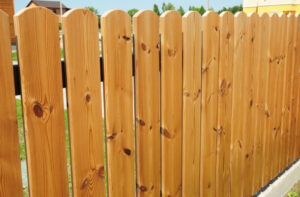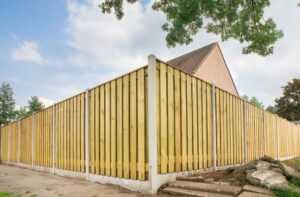History of El Cajon, California
Early History
The area that is now El Cajon was originally inhabited by the Kumeyaay people, who had lived in the region for over 12,000 years. The Kumeyaay were hunter-gatherers who lived off the land, fishing in the rivers and oceans, and gathering acorns and seeds.
In 1769, the first Europeans arrived in the area when Spain began colonizing California. The El Cajon Valley became part of the 1795 San Diego Mission lands. In 1821, Mexico gained independence from Spain and took control of the territory. The land that would become El Cajon was part of a Mexican land grant called Rancho El Cajon.
During the Mexican-American War in the late 1840s, California was ceded to the United States after the Treaty of Guadalupe Hidalgo. California officially became a U.S. state in 1850. American settlers began arriving in greater numbers to establish cattle ranches and farms in the El Cajon Valley.
Founding of El Cajon
El Cajon was officially established in 1868 when Amaziah Lord Knox and his family purchased 160 acres of land in the valley for $5,000 to develop a town site. Knox named it “El Cajon” which means “the box” or “the drawer” in Spanish, describing the valley’s shape.
On May 16, 1912, residents voted to incorporate El Cajon as an official city with a population of 568 residents. The first city council and mayor were elected shortly after. Early city leaders focused on improving roads, lighting, sanitation, and fire protection.
Early 20th Century Growth
In the early 1900s, El Cajon’s economy was primarily based around agriculture, with farms producing livestock, poultry, citrus fruits, grapes, olives, and grains. Several wineries also opened in the area due to the success of grape farming.
El Cajon saw steady population growth in the early 20th century, rising from 568 residents in 1912 to 1,434 residents in 1920. The city continued growing and developing more urban amenities like paved roads, sidewalks, parks, schools, and improved water and electrical systems.
Major landmarks built during this time included:
- Knox House Museum (1898)
- El Cajon Valley High School (1904)
- El Cajon Public Library (1910)
- East Main Street Commercial Buildings (1920s)
Mid-Century Changes
The period after World War II saw even more rapid changes and suburban development in El Cajon. Many soldiers passing through San Diego during the war took notice of the area’s pleasant climate. Large tracts of houses and new neighborhoods were constructed to accommodate the population boom. El Cajon’s population grew from around 3,000 in 1940 to over 36,000 by 1960.
Some key events and changes during this mid-20th century growth include:
- Establishment of Gillespie Field airport (1942)
- Building of Parkway Plaza shopping center (1954)
- Founding of Grossmont College (1961)
- Construction of San Diego Freeway through the city (1961)
- Transition from agricultural to more commercial/industrial economy
Recent Decades
In recent decades, El Cajon has continued growing into a diverse suburban city and bedroom community for San Diego. Some major developments since the 1980s include:
- New public library building constructed (1986)
- Opening of Grossmont Center mall expansion (1989)
- Developments in the Downtown Historic District (1990s-2000s)
- Construction of Petco Park baseball stadium in nearby San Diego (2004)
- Building of bus rapid transit Green Line through city (2014)
- Various commercial developments along I-8 corridor
- Median home price growth from $150k in 2000 to over $500k in 2020
Today, El Cajon is home to over 103,000 residents and still demonstrates a remarkable pioneer spirit and sense of community pride. The city celebrates its history through various events and historic preservation efforts. Community members look to preserve El Cajon’s small-town character, while still cultivating measured growth and evolution.
Historic Places and Landmarks
El Cajon contains numerous historically significant buildings, monuments, and points of interest:
Knox House Museum
- Built in 1898, this Victorian-style farmhouse was the home of city founder A.L. Knox and his family. It is now operated as a historic house museum displaying 1800s period decor.
Stephen M. Graves House
- This prairie-style home was built in 1913 and was the residence of businessman Stephen M. Graves. It was restored in the 1980s and listed on the National Register of Historic Places.
El Cajon Historical Society Museum
- Located in a 1915 Classical Revival-style building, this museum contains exhibits on El Cajon’s history and is home to the Knox House Museum’s historical archives.
El Cajon Public Library
- The original 1910 Carnegie library building is recognized as a historic city landmark and meeting point. The modern library now resides next door.
Magnolia Avenue
- This thoroughfare contains many of El Cajon’s historic commercial buildings from the 1910s-1930s, including examples of Art Deco architecture.
East Main Street Commercial Buildings
- This early 20th century block of one and two-story brick storefront buildings represent El Cajon’s small town heritage.
Parkview Cemetery
- Established in 1909, this cemetery is the resting place for many of El Cajon’s pioneering founders and leaders.
Gillespie Field
- This small airport was established in 1942 as a World War II pilot training base. It continues operating today as a historic site.
Historic Figures
Some of the key influential figures in El Cajon’s history include:
Amaziah Lord Knox – Founder of El Cajon who purchased the original town site land and named the city in 1868. Served on the county board of supervisors and state legislature.
Anson Ames Vandegrift – El Cajon’s first elected mayor in 1912 and a leader in the city’s early development. He served over 20 years on city council.
Cleveland Chase – Responsible for building many of El Cajon’s early civic structures like the high school, library, post office, and city hall.
John Thomas Foster – Rancher, businessman, and politician who contributed greatly to El Cajon’s growth around the 1940s-50s period. Served as mayor from 1955-1958.
William Jones – Founded Parkway Plaza in 1954, ushering in an era of commercial suburban development in El Cajon as the first open-air shopping center in the U.S.
Clifton A. Curry – Four-term mayor of El Cajon for 16 years from 1988-2004. Oversaw major initiatives like the new public library, redevelopment projects, and city branding.
Mark Lewis – Current long-serving mayor first elected in 1998. Has prioritized public safety, economic expansion, and homeless services while maintaining small town character.
Historic Events Timeline
- 1769 – Spanish explorer Portola passes through valley, followed by establishment of Spanish missions in area
- 1848 – California becomes part of United States after Mexican-American War
- 1850 – California joins union as 31st state
- 1868 – El Cajon founded by A.L. Knox
- 1875 – First schoolhouse built
- 1903 – City incorporates with about 600 residents
- 1905 – Telephone and electricity come to El Cajon
- 1912 – El Cajon officially incorporates as a city
- 1913 – Gillespie Field airport site established as U.S. Army reserve
- 1923 – Large Eucalyptus tree planting project gives city nickname “City of Trees”
- 1942 – Gillespie Field airport fully built and becomes active WWII pilot training base
- 1954 – Parkway Plaza regional shopping center opens
- 1961 – San Diego Freeway built through El Cajon
- 1980 – New civic center complex constructed
- 1986 – State-of-the-art public library building opens
- 2004 – Petco Park baseball stadium opens nearby in San Diego
- 2014 – Green Line bus rapid transit route debuts connecting El Cajon to San Diego
Historic Industries and Businesses
Some of the major historic industries, agricultural products, and companies in El Cajon’s development include:
- Citrus farming – Oranges, lemons, grapefruits thrived in the climate and grew into a major 1920s-50s industry. Brands like Knox Citrus Groves and Brown & Sons Citrus dominated production.
- Poultry farming – By the 1950s, El Cajon supplied over 65% of San Diego County’s eggs and poultry. Major distributors like Foster Farms and R-C Ranch played big roles.
- Dairy farming – Milk bottling facilities like Lakeside Dairy thrived within the city to process dairy from local cow ranches.
- Grape farming – Wineries like Dehesa Valley Winery opened in the early 1900s during peak grape production era.
- Beef cattle ranching – Cattle raising and slaughtering was an early booming business, with brands like Chase Ranch.
- Webb Company – Founded in the 1920s, this was one of the city’s largest early manufacturing firms, specializing in textile goods.
- Ford Dealership – Original car dealership built in 1937 and still operating today as Pearson Ford.
- Parkway Plaza – Opened in 1954 as one of California’s first suburban shopping centers, kicking off an era of commercial growth in El Cajon.
Historic Neighborhoods
Some of El Cajon’s early residential areas that grew during the city’s founding and development include:
- Knoxville – One of the original neighborhoods settled around Knox’s downtown homestead in the late 1800s. Contains many Victorian and early 20th century houses.
- Stockton – Formed south of Knoxville in the 1920s-30s during an expansion boom. Known for quality craftsman bungalows.
- Rolando Knolls – Mid-century neighborhood built in 1953 featuring iconic 1950s ranch homes.
- Fletcher Hills – Large master-planned suburban community developed in 1961 with over 800 homes. Reflects post-war expansion.
- Rancho San Diego – Built out in the 1970s as one of the area’s first master-planned golf course communities.
Historic Churches and Cemeteries
El Cajon contains several historic churches established by early pioneer settlers and graveyards where city founders were laid to rest:
- First Presbyterian Church – Founded in 1890, it is El Cajon’s oldest church. The original sanctuary was built in 1898.
- Parkway Community Church – Constructed in 1913, this building was originally the El Cajon Christian Church.
- Holy Trinity Catholic Church – Established in 1925 to serve El Cajon’s growing Catholic community at the time.
- Foothills United Methodist Church – Built in 1951 in the Mid-Century Modern style.
- Parkview Cemetery – Contains graves of many city pioneers like A.L. Knox, J.T. Foster, C. Chase, and Anson Ames.
- Broadway Cemetery – Smaller historic cemetery established in 1890.
Architectural Legacy
As a city with over 150 years of history, El Cajon contains diverse architecture representing different eras:
- Victorian – Seen in early homes like the 1898 Knox House Museum.
- Craftsman – Dominant bungalow style from the 1910s-1930s seen around Downtown.
- Spanish Revival – Used for key 1920s-30s civic buildings like the El Cajon Police Station.
- Art Deco – Late 1920s-30s style typified by the 1938 El Cajon Post Office.
- Mid-Century Modern – Post-war 1950s style seen in commercial buildings and neighborhoods like Rolando Knolls.
- Ranch – Iconic residential style of the 1950s-1970s found around subdivisions and master-planned communities.
- Contemporary/Suburban – Architectural mix of typical late 20th century auto-centric suburban development.
El Cajon’s diversity of historic architecture provides visual documentation into each chapter of the city’s transformation from frontier town into thriving suburb.
Service Area
East El Cajon (91919, 92021)
Downtown El Cajon (92020)
Fletcher Hills (92020)
Rancho San Diego (92019)
Casa de Oro (92019)
Bostonia (91919)
Granite Hills (92019)
Pepper Drive (92020)
Lakeside (92040)
Parkway (92020)
Emerald Hills (92020)
West El Cajon (92020)
Fletcher Peak (92020)
Anderson (92020)
Wells Park (92020)
Los Coches Adobe (92019)
Greenfield (92021)
Lexington Hills (92020)
Singing Hills (92019)
Mt Helix (92040)
Hours
Monday: 9:00 AM – 5:00 PM
Tuesday: 9:00 AM – 5:00 PM
Wednesday: 9:00 AM – 5:00 PM
Thursday: 9:00 AM – 5:00 PM
Friday: 9:00 AM – 5:00 PM
Saturday: 9:00 AM – 5:00 PM
Sunday: 9:00 AM – 5:00 PM
Contact Us.
Get Solutions For All Fencing Services
Every day from
9:00 — 5:00
Call to ask any question





